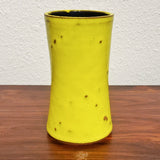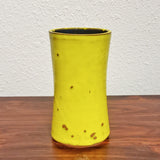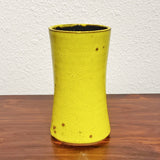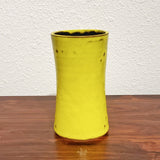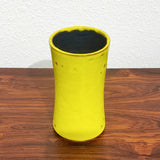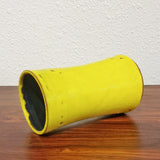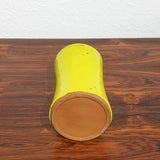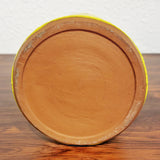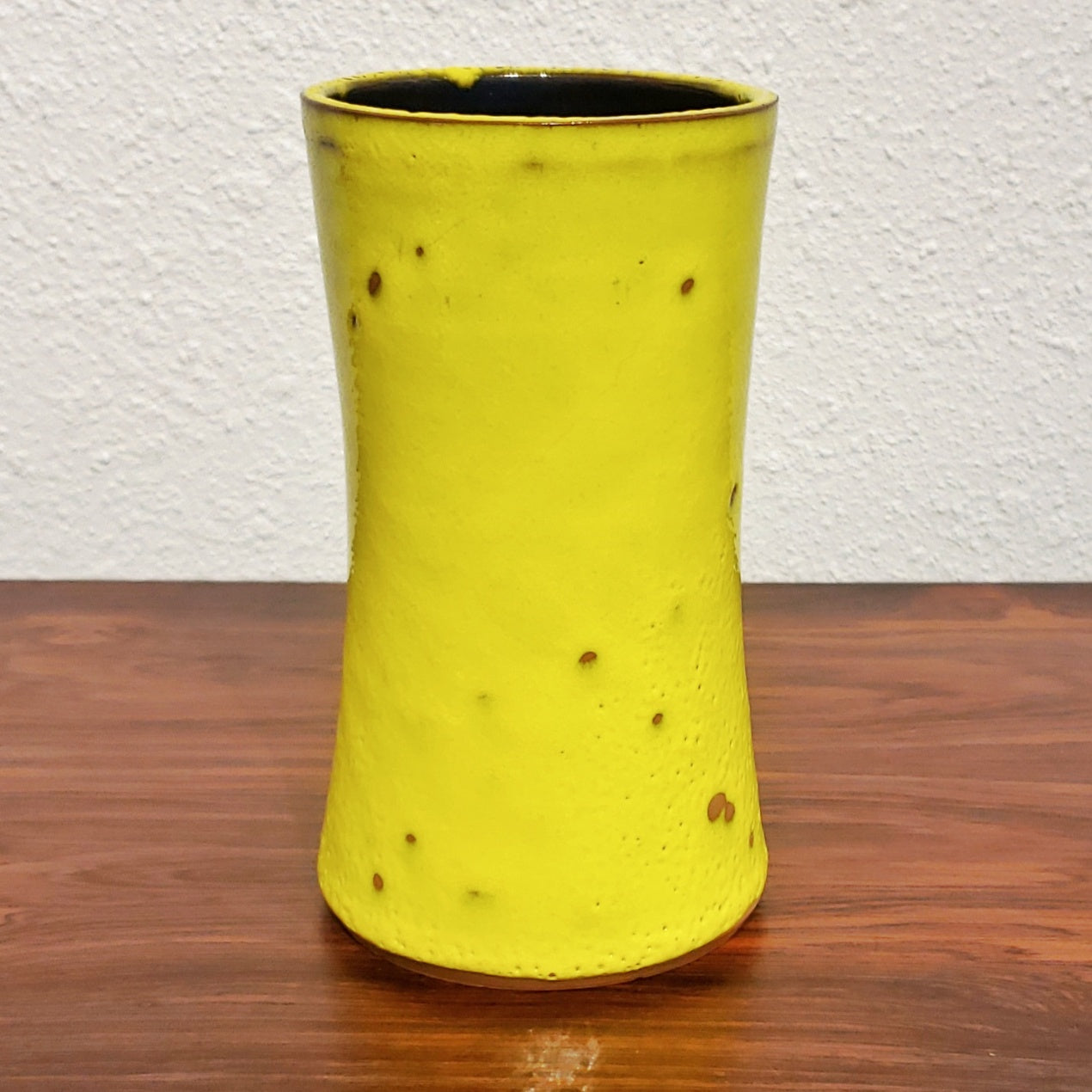
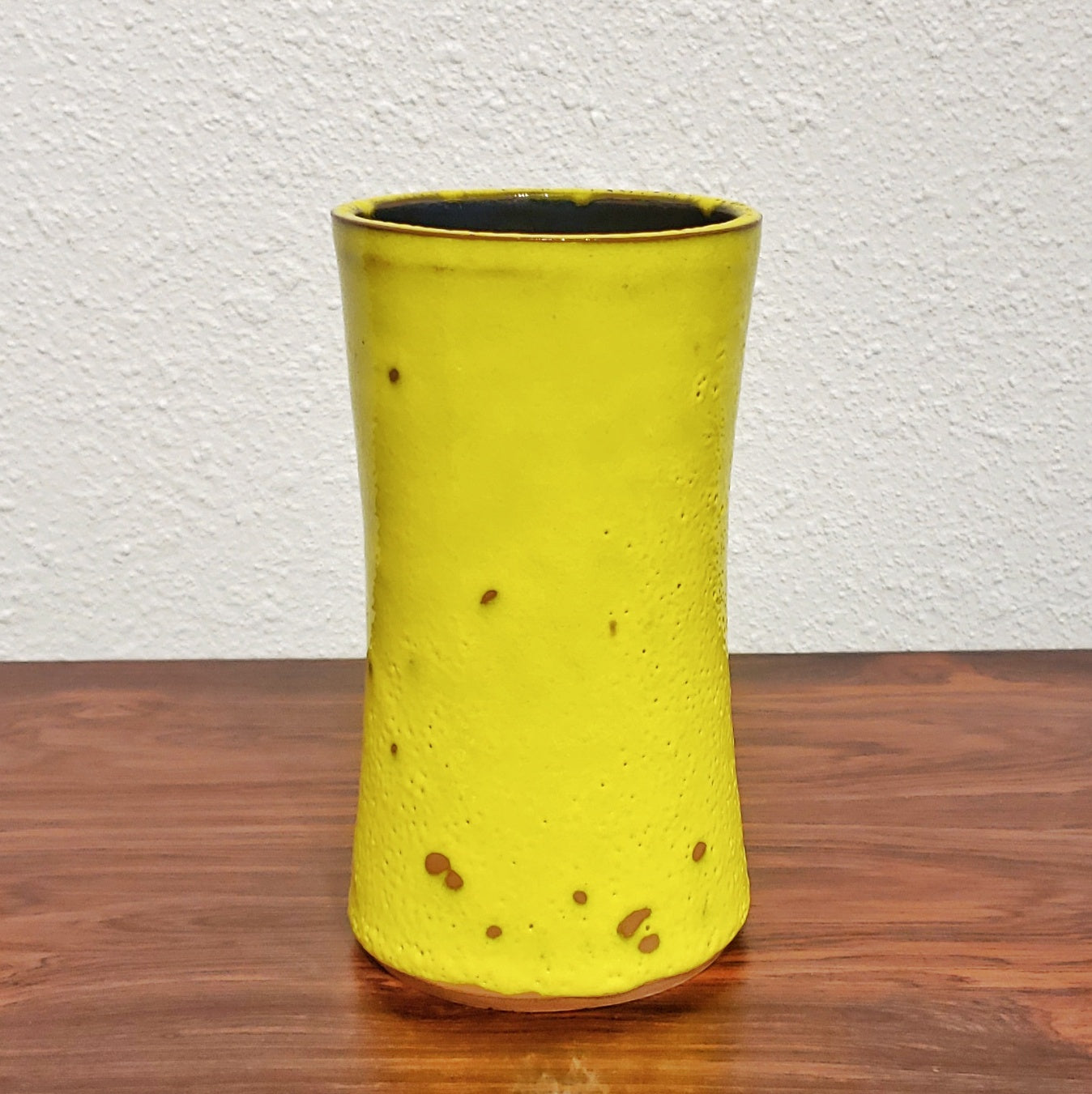
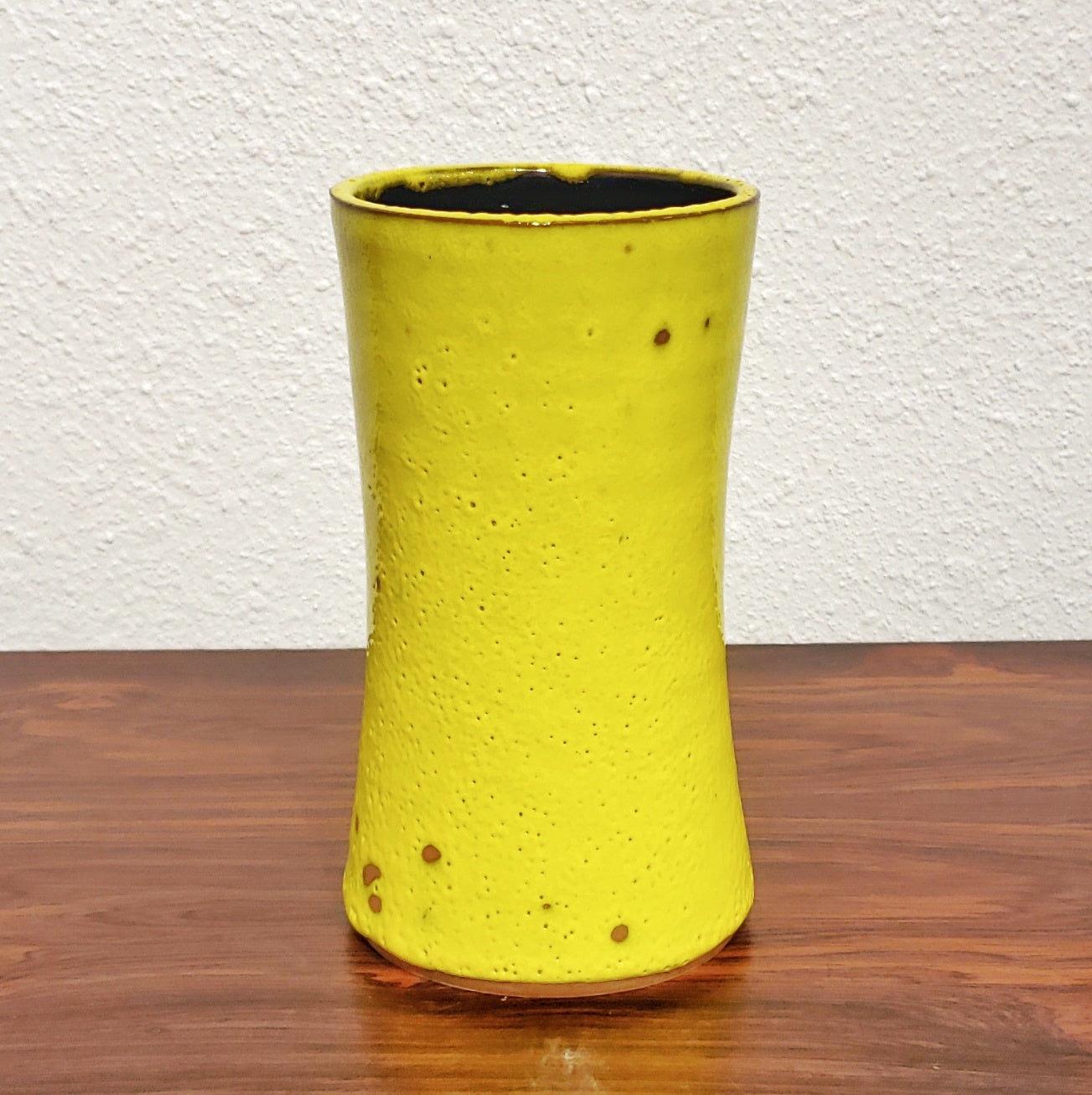
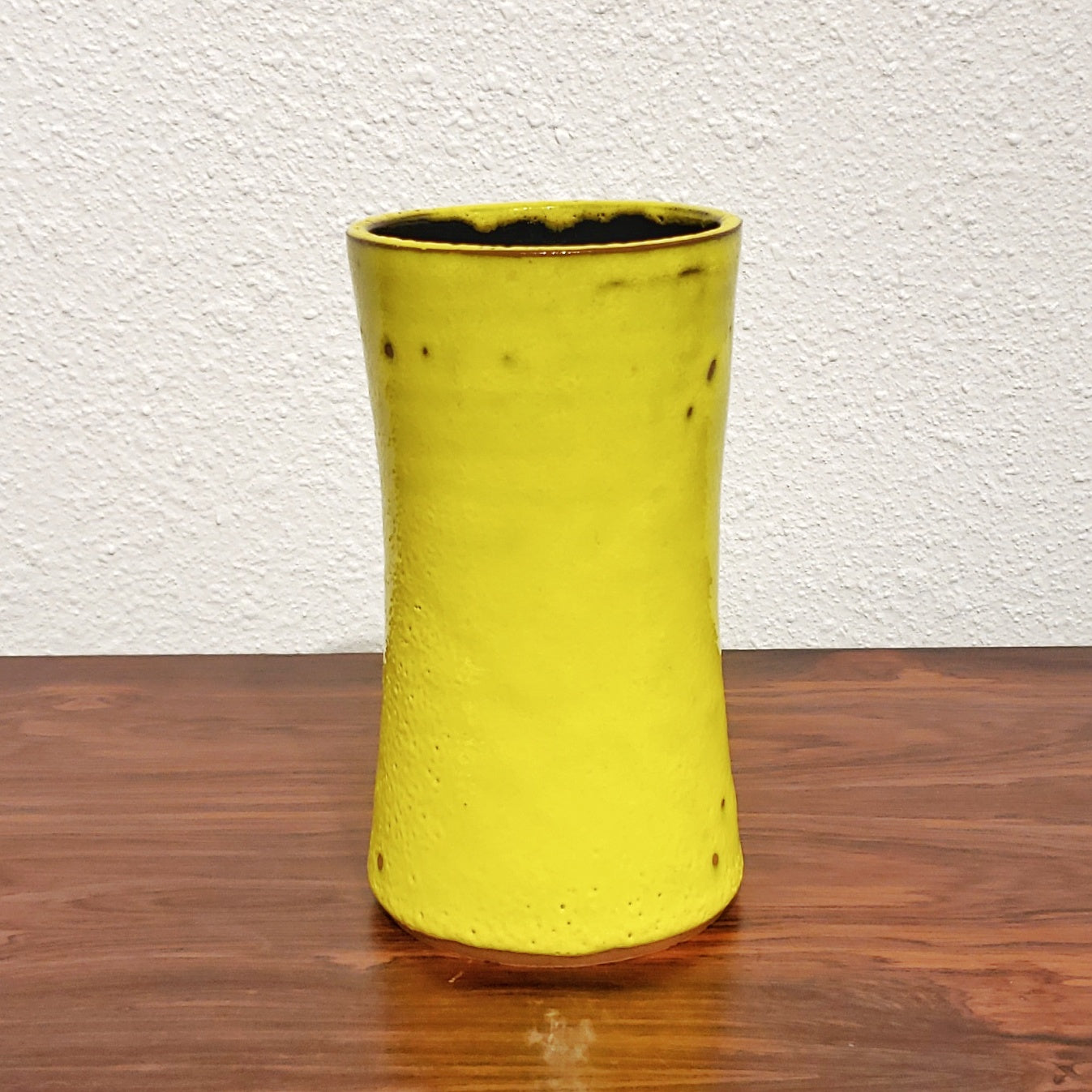
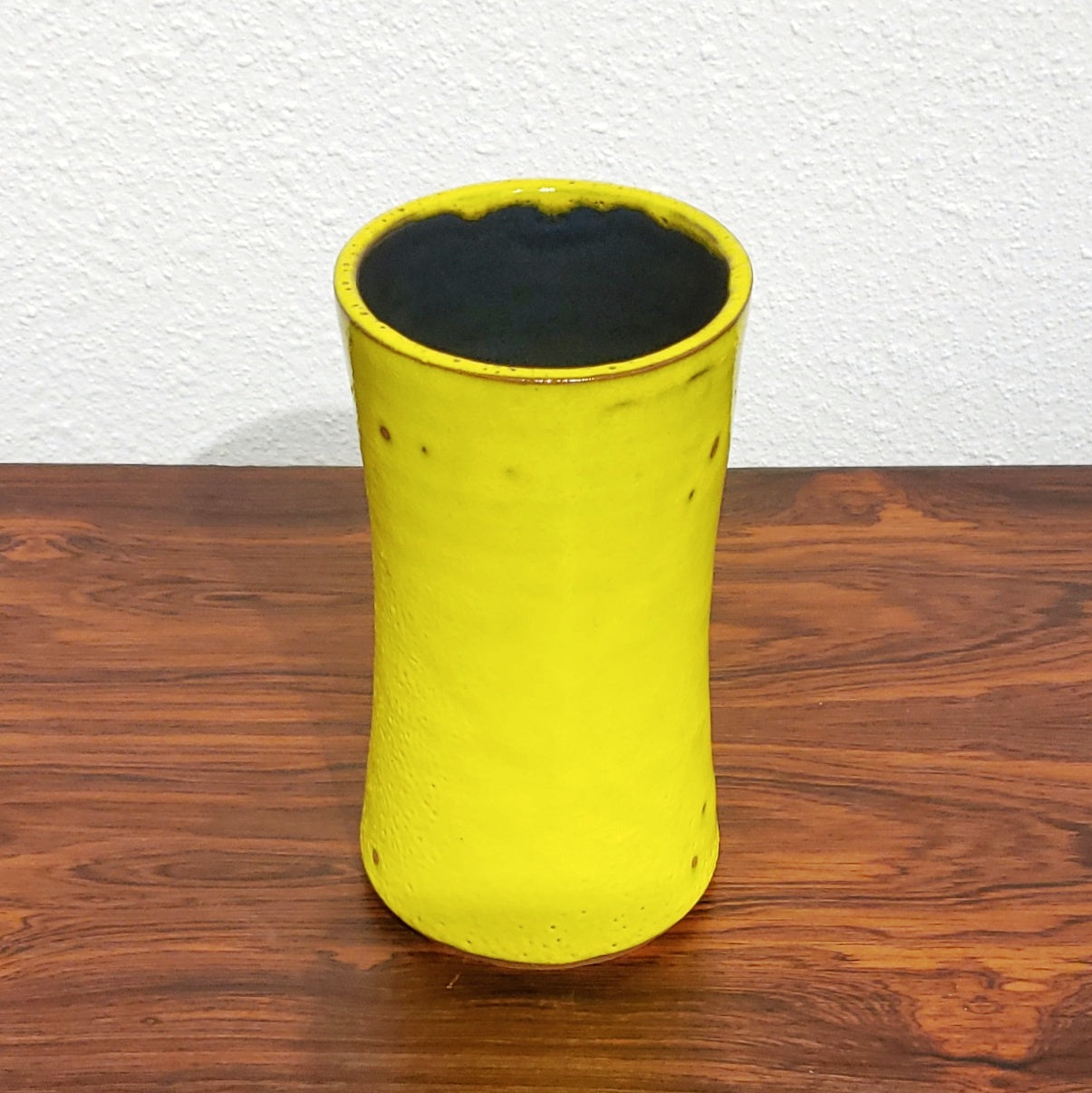
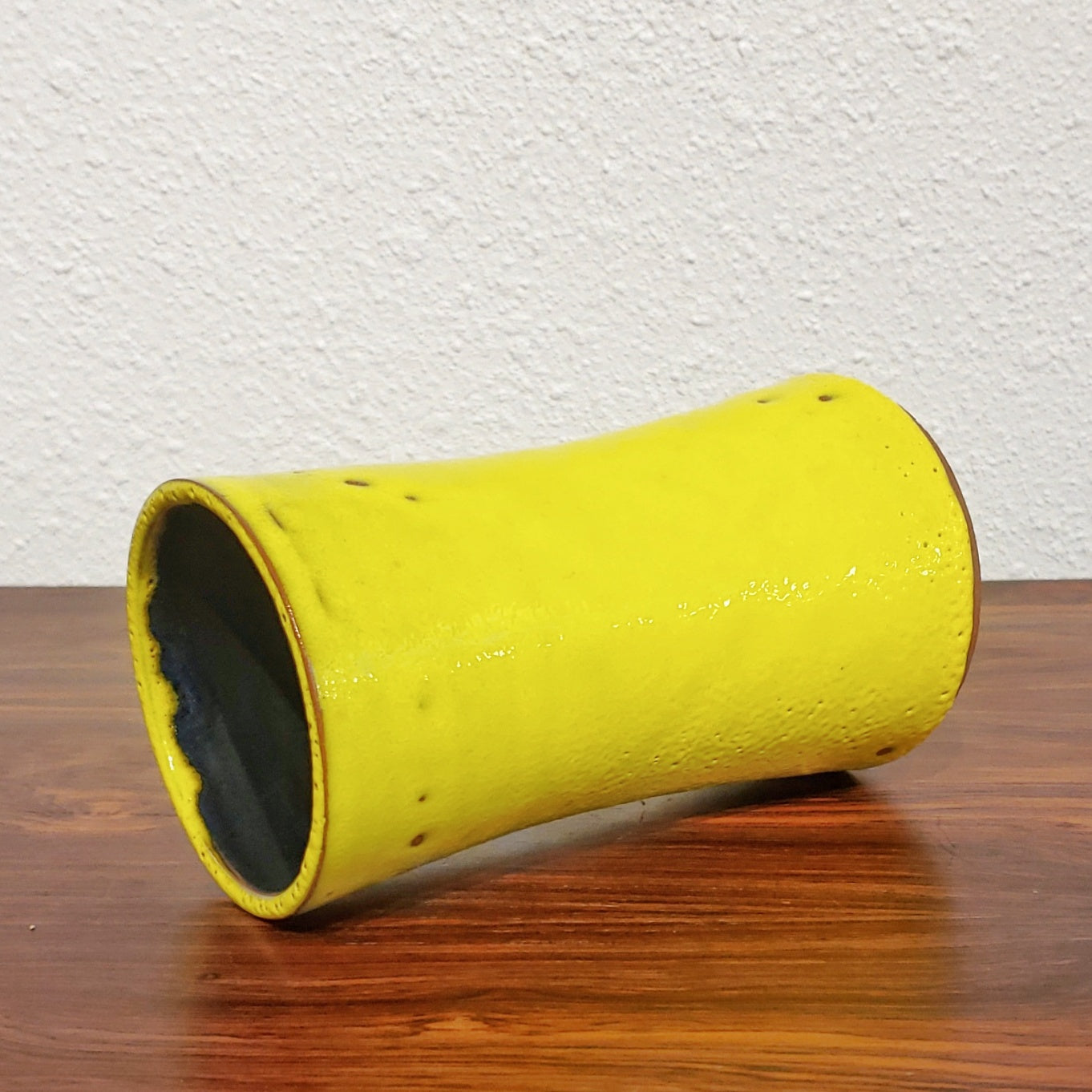
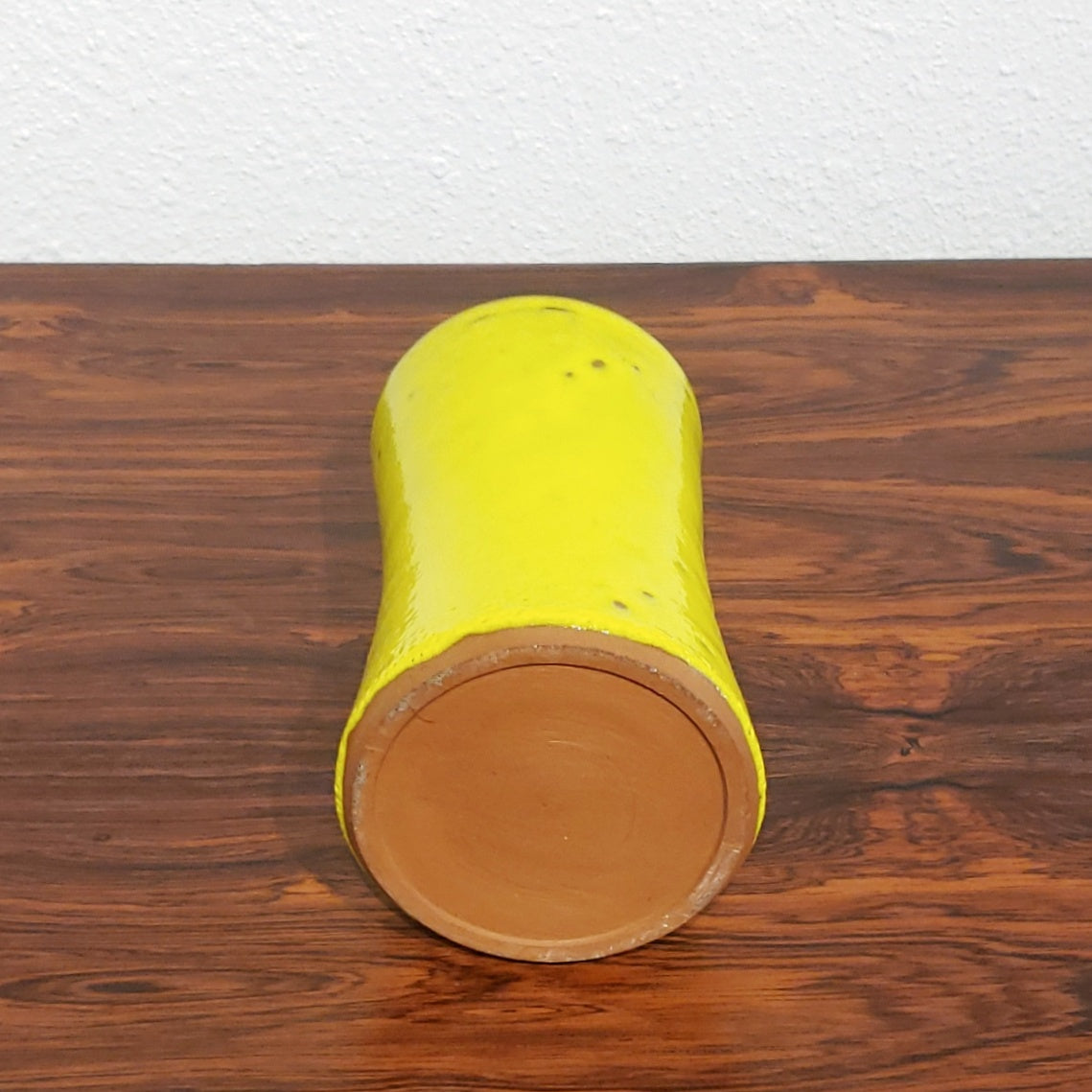

1960s ACID YELLOW GRAMANN RÖMHILD VASE
CONTACT US HERE ABOUT THIS ITEM.
An elegantly simple vase in the Bauhaus tradition, with a slightly cinch-waisted cylinder shape and a bright, acid-yellow glaze with hints of the body's terra cotta winking through—from the TÖPFERHOF GRAMANN studio at Römhild, aka VEB Töpferhof Römhild (as it was constituted following East German nationalization), aka Gramann Römhild. Stunning in the artlessness of its form and its bold coloring, this vintage item is unmarked, but unmistakably a handmade vase from the Römhild studio. It is in pristine condition with no signs of previous use.
TÖPERHOF GRAMANN (aka Gramann Römhild) can trace its roots back to 1720 when a furnace builder from Marbach in southwest Germany decided to open a pottery business in the small town of Römhild in the east-central German state of Thuringia. The workshop has been in the family for generations since, as documented by journeyman's letters, passports, and other historical papers in the family's possession. It was with the takeover of operations at the beginning of last century by descendant Karl Gramann, who had trained as a sculptor, that the artistic component of the studio's ceramic production took on a dominant role. The studio’s output became less about the production of pedestrian goods and more about the individual beauty of the designs. This shift in focus coincided with the company's growing commercial success.
At the end of WWII, Römhild found itself within the borders of the GDR and the Gramann family business along with it. In 1948 Karl's son Siegfried Gramann completed his apprenticeship and assumed management of the company. The son continued the firm's transformation and expansion, turning it into a modern manufacturing facility. Siegfried Gramann's work had an unmistakable character, and his attractive designs developed into "export hits" for the GDR. Thanks to these successes, the firm became the leading company of East Germany's "Artisan Ceramics" product group, and Römhild achieved a level of fame throughout the country from its products. The use of the latest production techniques, the great innovation among its employees, and the artistry and leadership of Siegfried Gramann assured the company's prosperity. TÖPERHOF GRAMANN earned the distinction of being Europe's largest hand-turned pottery company, with 60 freehand turners and a like number of ceramic painters working there at any given time. Nevertheless, due to the free-shaping at the wheel and the individual character of the decoration, its products maintained a level of artistry that belied serial production.
Following a transfer to public ownership in 1972, the company operated under the name VEB Töpferhof Römhild. Siegfried Gramann remained on as director and manager and continued to develop the company. By the beginning of the 1980s, after several expansions, it had more than 300 employees. The company's studio was always the heart from which new innovations in shape and color sprang. In 1976, Gramann was awarded the title of engineer in the field of sintering technology (the process by which ceramics are densified for use in high‐performance applications under extreme conditions) by the engineering school for glass technology in Weißwasser. Over the course of his life, Siegfried Gramann would receive numerous awards for his artistic, ceramic, and entrepreneurial achievements.
With the 1990 reunification of Germany, the business was returned to family hands. The economic upheavals of the decade and the dawn of globalization took their tolls. Another blow came with Siegfried Gramann's death in 1991, at which point his daughter, Christina Gramann, took over. Even under the difficult conditions, the production of high-quality, tasteful ceramics continued. A new operating strategy would focus increasingly on the production of individualized art product. When Christina Gramann died in 2008, the management of the family business fell to her son. The company still exists today in the same location in Römhild.
Production Period – 1960-1969
Country of Origin – EAST GERMANY
Maker – TÖPERHOF GRAMANN
Attribution – WELL-KNOWN
Materials – CERAMIC
Colors – YELLOW
Condition – VERY GOOD (no defects; may show slight traces of use)
Height (cm) – 16.5
Diameter (cm) – 9.5

